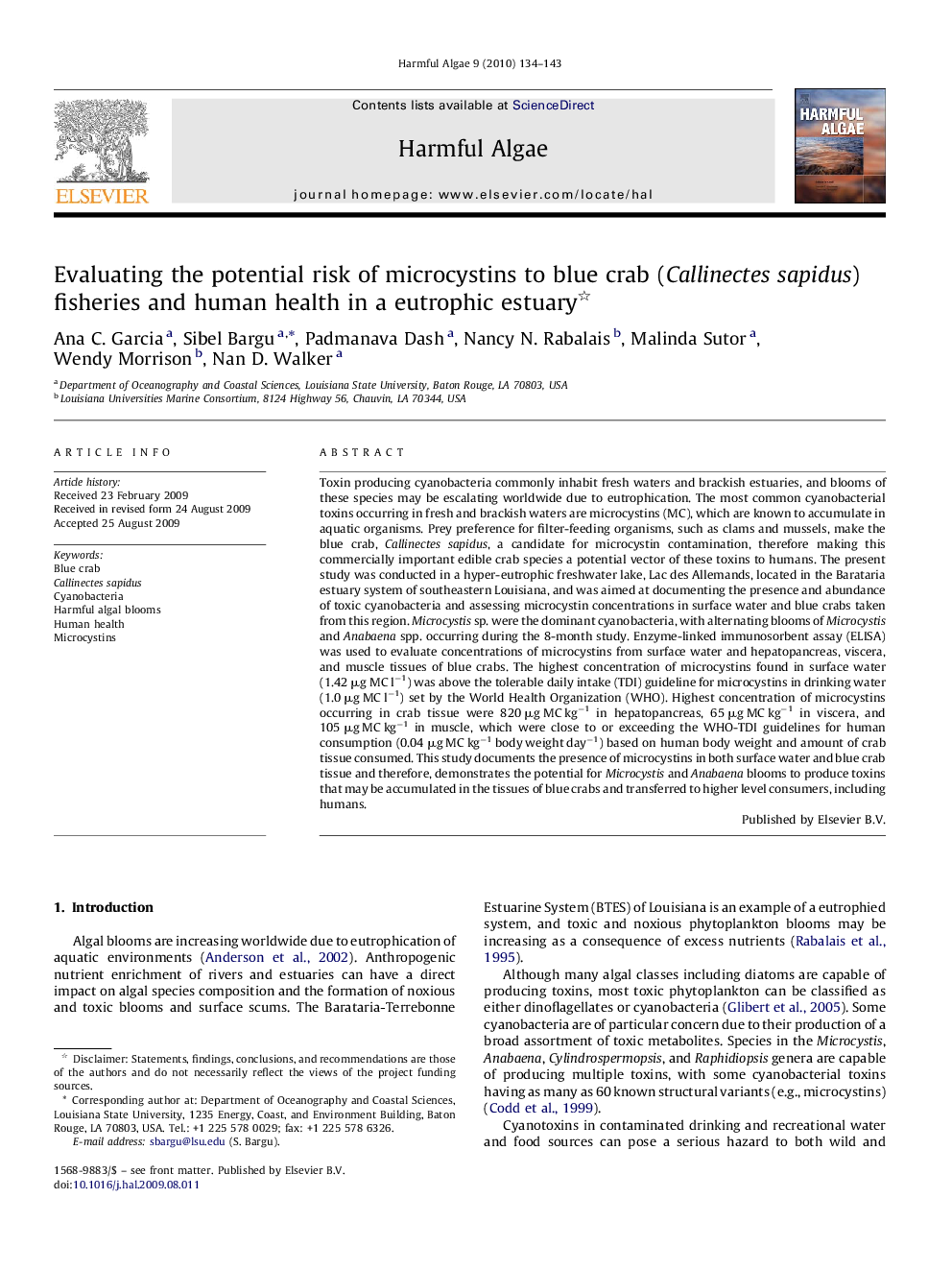| کد مقاله | کد نشریه | سال انتشار | مقاله انگلیسی | نسخه تمام متن |
|---|---|---|---|---|
| 4546009 | 1327483 | 2010 | 10 صفحه PDF | دانلود رایگان |

Toxin producing cyanobacteria commonly inhabit fresh waters and brackish estuaries, and blooms of these species may be escalating worldwide due to eutrophication. The most common cyanobacterial toxins occurring in fresh and brackish waters are microcystins (MC), which are known to accumulate in aquatic organisms. Prey preference for filter-feeding organisms, such as clams and mussels, make the blue crab, Callinectes sapidus, a candidate for microcystin contamination, therefore making this commercially important edible crab species a potential vector of these toxins to humans. The present study was conducted in a hyper-eutrophic freshwater lake, Lac des Allemands, located in the Barataria estuary system of southeastern Louisiana, and was aimed at documenting the presence and abundance of toxic cyanobacteria and assessing microcystin concentrations in surface water and blue crabs taken from this region. Microcystis sp. were the dominant cyanobacteria, with alternating blooms of Microcystis and Anabaena spp. occurring during the 8-month study. Enzyme-linked immunosorbent assay (ELISA) was used to evaluate concentrations of microcystins from surface water and hepatopancreas, viscera, and muscle tissues of blue crabs. The highest concentration of microcystins found in surface water (1.42 μg MC l−1) was above the tolerable daily intake (TDI) guideline for microcystins in drinking water (1.0 μg MC l−1) set by the World Health Organization (WHO). Highest concentration of microcystins occurring in crab tissue were 820 μg MC kg−1 in hepatopancreas, 65 μg MC kg−1 in viscera, and 105 μg MC kg−1 in muscle, which were close to or exceeding the WHO-TDI guidelines for human consumption (0.04 μg MC kg−1 body weight day−1) based on human body weight and amount of crab tissue consumed. This study documents the presence of microcystins in both surface water and blue crab tissue and therefore, demonstrates the potential for Microcystis and Anabaena blooms to produce toxins that may be accumulated in the tissues of blue crabs and transferred to higher level consumers, including humans.
Journal: Harmful Algae - Volume 9, Issue 2, February 2010, Pages 134–143